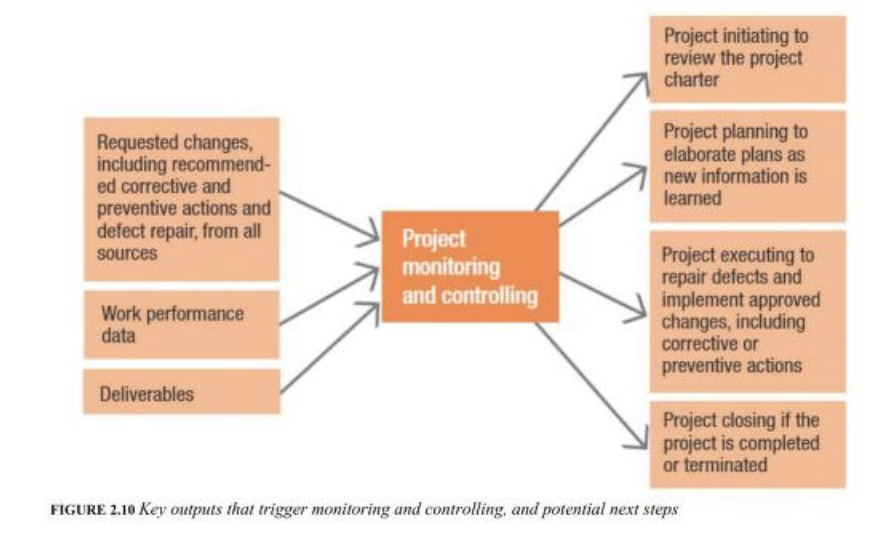Comparing Execution in Predictive vs. Adaptive Project Environments
In a predictive (plan-driven) environment, project execution is guided by a detailed, pre-established plan. The team carries out predefined tasks in a structured sequence, and deviations from the plan are typically limited to unanticipated issues such as resource constraints or schedule delays. This model assumes that the majority of the work can be identified and planned in advance.
Conversely, in adaptive (Agile) environments operate under the assumption that change is inevitable. Execution in this context is highly iterative and responsive. Teams continuously learn, reassess, and replan based on evolving stakeholder needs, shifting priorities, or newly discovered information. Since not all requirements are known upfront, the focus is on flexibility and responsiveness rather than rigid adherence to an original plan.
Monitoring and Controlling: An Integral Process Group
The Monitoring and Controlling process group interacts dynamically with all other process groups. It involves systematically tracking project performance, identifying variances or issues, and making necessary adjustments to ensure the project stays on course. These adjustments may affect planning, execution, or even other knowledge areas.
A common area of confusion among students is the distinction between executing—(carrying out the project work) and monitoring and controlling—the act of overseeing, measuring, and guiding that work. Recognizing this distinction is essential for effective project management.

Challenges in Monitoring and Controlling
Monitoring and controlling often presents challenges for test takers and practitioners alike because it requires a structured, analytical approach to evaluating project performance. It involves systematically observing, measuring, and analyzing project metrics.
Although this process group applies to both predictive and Agile projects, it is typically easier to conceptualize in plan-driven environments, where formal terminology like “monitoring and controlling” is standard. Agile teams, however, do actively measure progress and adapt, albeit using different techniques.
Agile relies heavily on feedback loops such as demos, reviews, and retrospectives rather than strict adherence to predefined specifications. The Product Owner plays a pivotal role in managing change by maintaining the backlog and facilitating quick decision-making, allowing the team to remain aligned without a formal change control board.
Additionally, Agile projects may incorporate special iterations, called spikes, to explore new technologies or ideas. These spikes reflect the underlying “measure and control” mindset, even if the terminology differs.
Monitoring and Controlling in Agile Contexts
In Agile projects, monitoring and controlling is embedded in practices such as:
- Iteration reviews and retrospectives – for assessing performance and improving processes.
- Daily stand-ups – for tracking short-term progress and removing obstacles.
- Backlog refinement – where the product owner manages evolving priorities.
Agile teams rarely follow a formal change control process. Instead, change is managed fluidly through the product backlog and empowered decision-making by the product owner. This allows teams to pivot quickly without requiring extensive documentation or procedural approvals.
Agile also incorporates experimental efforts known as spikes—time-boxed iterations designed to research new ideas or technologies. Though informal in language, spikes embody the principles of monitoring and controlling by enabling informed decision-making through exploration and measurement.
Mapping Process Domains and Process Groups
The figure below compares the main content of the ECO Process domain with the Process Groups model, illustrating their approximate equivalence as mapped in this study guide:
budget and resources
Click here to visit the Rita's Process Chart